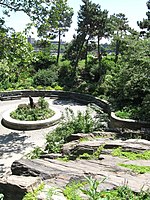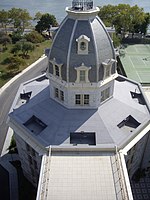10 Gracie Square
Condominiums and housing cooperatives in ManhattanResidential buildings completed in 1931Upper East Side
10 Gracie Square, sometimes styled Ten Gracie Square is a 1930-31 pre-war "white glove" co-op building constructed in Art Deco style. It's located on East 84th Street on Manhattan's Upper East Side between East End Avenue and the FDR Drive. It is one of only 42 "good buildings" in Manhattan as designated by Tom Wolfe, and is known for its sixteen-room triplexes.Prior to the construction of the FDR Drive, which eliminated its river access, the building once had a residents' only yacht mooring on the East River. Prior residents include: Brooke Astor, Frances Schreuder, Jean Stein, Madame Chiang Kai-shek and Gloria Vanderbilt.
Excerpt from the Wikipedia article 10 Gracie Square (License: CC BY-SA 3.0, Authors).10 Gracie Square
Gracie Square, New York Manhattan
Geographical coordinates (GPS) Address Nearby Places Show on map
Geographical coordinates (GPS)
| Latitude | Longitude |
|---|---|
| N 40.773055555556 ° | E -73.945 ° |
Address
Gracie Square 9
10028 New York, Manhattan
New York, United States
Open on Google Maps






